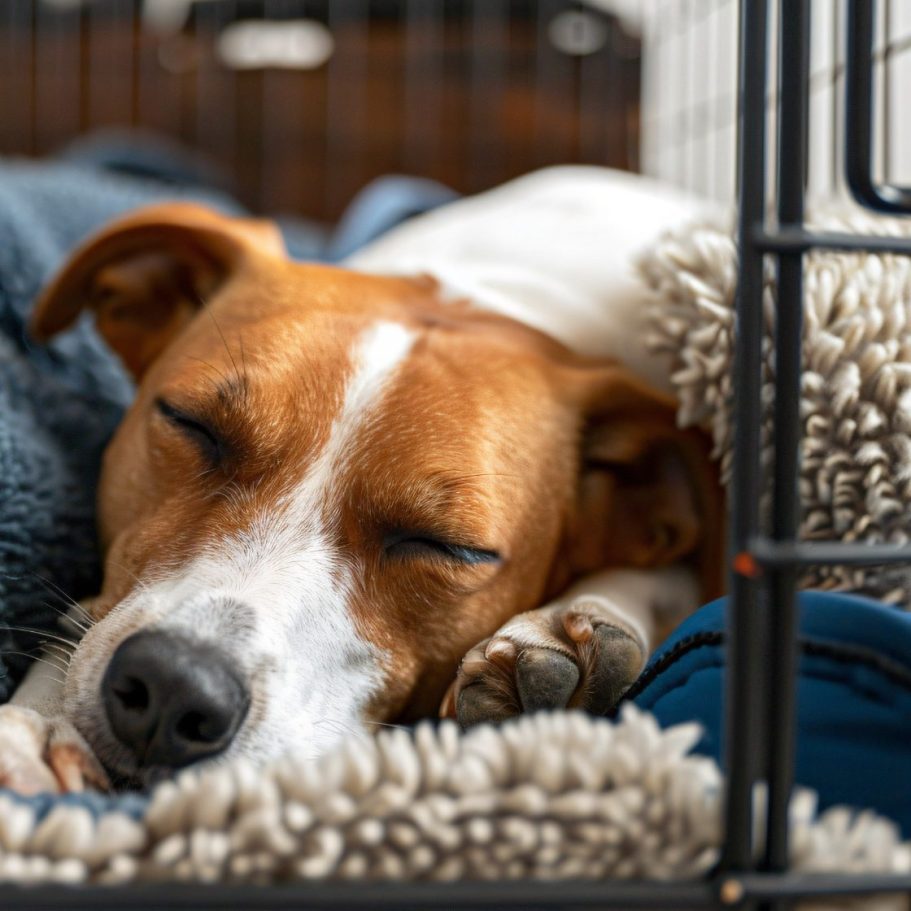Creating a Safe Space at Home for an Anxious Dog
As dog owners, we want our furry friends to feel safe, secure, and loved. However, for dogs suffering from anxiety, the world can often feel overwhelming. Whether it’s due to loud noises, separation anxiety, or past trauma, an anxious dog needs a sanctuary where they can retreat and feel calm. Creating a safe space at home is one of the most effective ways to help your dog manage their anxiety and build confidence.
In this blog, we’ll explore practical steps to design a comforting environment for your anxious pup.

Understanding Canine Anxiety
Before creating a safe space, it’s important to recognise the signs of anxiety in dogs. Common symptoms may include excessive barking, pacing, trembling, drooling, destructive behaviour, or hiding. Triggers can vary from thunderstorms and fireworks to being left all alone by themselves or encountering unfamiliar people or animals. By identifying what causes your dog’s anxiety, you can tailor their safe space to address their specific needs.
Steps to Create a Safe Space for Your Anxious Dog
1. Choose the Right Location
The first step is selecting a quiet, low traffic area in your home where your dog can retreat without feeling disturbed. This could be a corner of a room, a closet, or even a designated crate. The space should be away from loud noises, such as TV's or busy entryways, and should feel enclosed to provide a sense of security.
2. Make It Comfortable
Fill the space with soft, cozy bedding that your dog loves. Consider using blankets or pillows with familiar scents, as this can be incredibly soothing. If your dog enjoys their crate, ensure it’s the right size, large enough for them to stand and turn around but cozy enough to feel like a den.
3. Add Familiar Items
Incorporate items that your dog associates with comfort and safety. This could include their favourite toys, a piece of your clothing (like an old t-shirt), or a chew toy to keep them occupied. Familiar scents and objects can help reduce stress and make the space feel like their own.
4. Control the Environment
Anxious dogs are often sensitive to their surroundings. Use blackout curtains to dim the space if your dog is scared of bright lights or thunderstorms. You can also play calming music or white noise to drown out unsettling sounds. Additionally, consider using pheromone diffusers or sprays, such as Adaptil, which mimic calming scents produced by mother dogs.
5. Establish a Routine
Dogs thrive on routine, and having a predictable schedule can help reduce anxiety. Encourage your dog to use their safe space during specific times, such as when you’re leaving the house or during noisy events. Over time, they’ll associate the space with comfort and security.
6. Respect Their Boundaries
It’s important to let your dog use their safe space on their own terms. Avoid forcing them into the area or disturbing them when they’re there. This space should be a place where they feel in control and free from any perceived threats.
7. Gradual Exposure
If your dog is hesitant to use their new safe space, introduce it gradually. Place treats or toys in the area to encourage exploration, and spend time nearby to reassure them. Positive reinforcement, such as praise or treats, can help them associate the space with good experiences.
Additional Tips for Managing Anxiety
While a safe space is a great tool, it’s also important to address the root causes of your dog’s anxiety. Here are a few additional tips:
Exercise: Regular physical activity can help reduce stress and burn off excess energy.
Training: Basic obedience training and desensitisation techniques can help your dog build confidence.
Professional Help: If your dog’s anxiety is severe, consult a veterinarian or a certified animal behaviourist for guidance. They may recommend medication or specialised dog training programs.


The Benefits of a Safe Space
Creating a safe space for your anxious dog isn’t just about providing a physical retreat, it’s about giving them a sense of security and control. Over time, this can lead to a happier, more confident dog who feels better equipped to handle stressful situations. Plus, it strengthens the bond between you and your pet, as they learn to trust that you’ll always provide a safe haven for them.
Final Thoughts
Anxiety can be challenging for both dogs and their owners, but with patience and understanding, you can make a world of difference in your dog’s life. By creating a safe space at home, you’re not only addressing their immediate needs but also helping them build resilience for the future. Remember, every dog is unique, so take the time to observe and adapt to what works best for your furry friend. Together, you can create a home filled with love, comfort, and peace.
Want to read more blogs for Reactive, Anxious, Nervous Dog Owners? Access them here...
Enjoyed the Blog? Why Not Leave Us A Comment?
We need your consent to load the translations
We use a third-party service to translate the website content that may collect data about your activity. Please review the details in the privacy policy and accept the service to view the translations.
